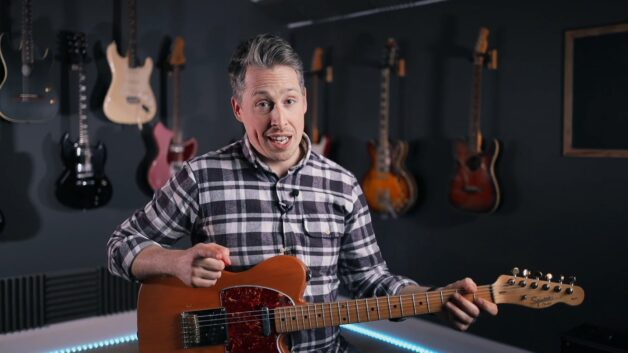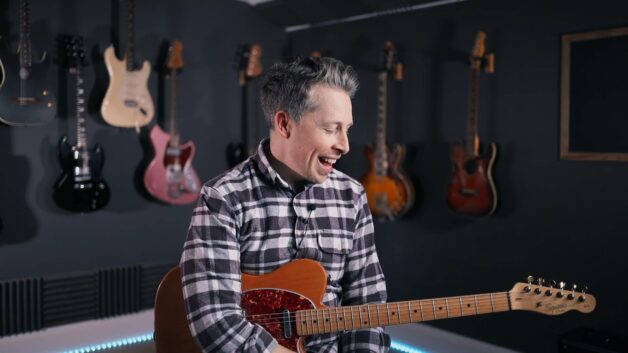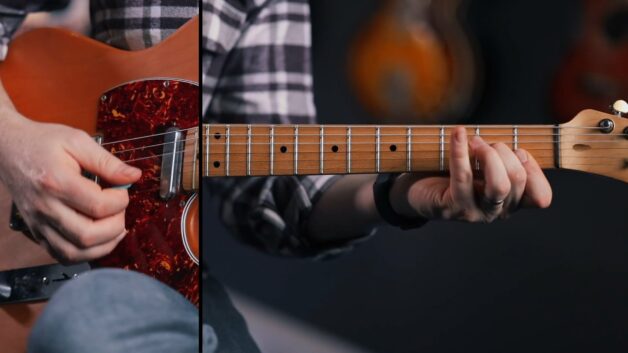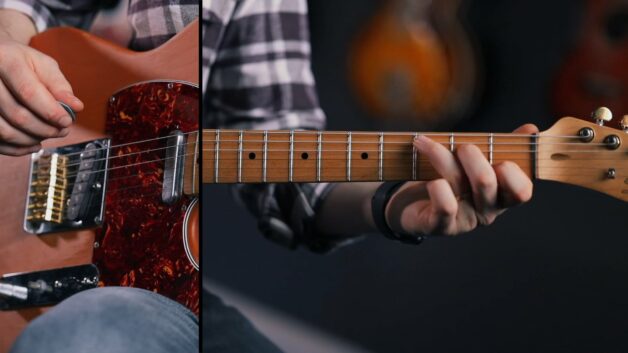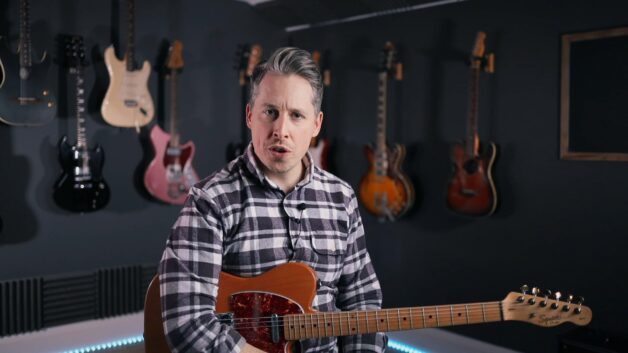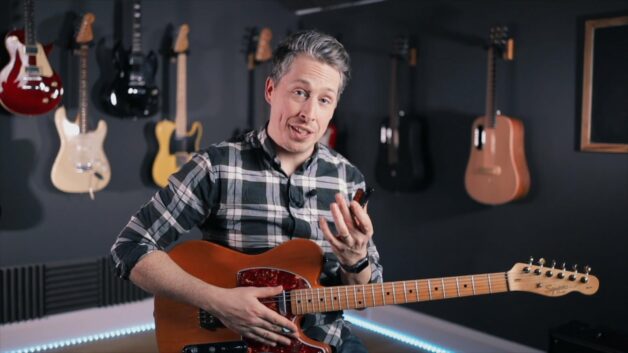Module 2 - Lesson 1
Introduction to Folk Guitar
 Julien Bitoun
Julien Bitoun
- Beginner
- Acoustic
-
MODULE 2
Introduction to Guitar Music Styles - Introduction to Folk Guitar
- Introduction to Blues Guitar
- Introduction to Pop Guitar
- Introduction to Rock Guitar
- Introduction to Metal Guitar
- Introduction to Funk Guitar
- Introduction to Jazz Guitar
Recommended songs
| Title | Album | Type | |
|---|---|---|---|
A Girl Like You

|
Rhythm Guitar | ||
A Horse with No Name

|
Acoustic Guitars | ||
Baby Can I Hold You

|
Tracy Chapman | Guitar | |
Big Jet Plane

|
Rhythm Guitar | ||
Blowin' In The Wind

|
Guitar | ||
| Eleanor Rigby | Guitar & Vocals | ||
Free Fallin'

|
Guitar | ||
Heart of Gold

|
Acoustic Guitar | ||
Hello

|
Acoustic Guitar | ||
Heroes

|
Guitar | ||
Hotel California

|
Hotel California | Acoustic Guitars | |
Imagine

|
Guitar | ||
Jambalaya (On The Bayou)

|
Guitar | ||
Knocking On Heaven's Door

|
Acoustic Guitars | ||
Let It Be

|
Guitar | ||
Like A Hurricane

|
Guitar | ||
Like A Rolling Stone

|
Guitar | ||
No Woman, No Cry

|
Guitar | ||
Save Tonight

|
Desireless | Guitar | |
Stand By Me

|
Acoustic Guitars | ||
While My Guitar Gently Weeps

|
Rhythm Guitar | ||
Wish You Were Here

|
Wish You Were Here | Rhythm Guitar | |
Wonderwall

|
(What's the Story) Morning Glory? | Acoustic Guitars | |
Yellow

|
Guitar | ||
You're Beautiful

|
Guitar |
How to Play Folk Music on Guitar: A Beginner’s Guide
Getting Started: It’s More than Just Strumming
Learning how to play folk music on guitar is about capturing a sound that’s both timeless and personal. While it might seem as simple as picking up an acoustic guitar and strumming along, genuine folk playing involves mastering a set of foundational skills that beginners often overlook. It’s common to see new guitarists dive straight into strumming chords without paying attention to rhythmic precision or chord clarity, resulting in a sound that’s muddy or uneven. But with the right approach, these hurdles quickly become manageable.
Before we dig into practical techniques, it helps to understand where folk guitar came from. Originally, folk songs were passed down orally, with each performer adapting melodies and lyrics to their style. Artists like Lead Belly in the early 20th century, and later Bob Dylan and Joan Baez in the 1960s, made folk a staple of modern music. Their influence remains powerful, shaping the styles of contemporary singer-songwriters from Ed Sheeran to Taylor Swift.
Essential Techniques for Authentic Folk Guitar Playing
When you start your journey of learning how to play folk music on guitar, choosing the right instrument matters. A flat-top acoustic guitar with steel strings, such as a Martin Dreadnought or a Gibson J-45, is ideal. These guitars produce a deeper resonance, complementing your voice and offering a balanced, warm tone typical in folk genres. Nylon strings, often favored by classical guitarists, generally won’t achieve the crispness required for folk, though beginners sometimes mistakenly choose them because they’re softer on the fingers.
Speaking of fingers, finger discomfort is one of the earliest and most common challenges beginners encounter. Building calluses takes patience, so short, regular practice sessions will be more beneficial than occasional lengthy ones.
Strumming consistently is another skill new guitarists struggle with. Many beginners either hesitate between chords or interrupt their rhythmic flow because they’re too focused on finger placement. A helpful tip here is to maintain a steady up-and-down motion even when switching chords. Over time, muscle memory develops, and you’ll naturally place your fingers faster and with less effort.
Open chords, commonly known as cowboy chords, form the backbone of folk guitar. Chords like G major, C major, D major, and A minor are essential, as their open strings offer a bright, resonant quality. Don’t underestimate the value of these basic chords. Songs such as “Knockin’ on Heaven’s Door” by Bob Dylan or Tom Petty’s “Free Fallin’” rely heavily on them. Mastering these foundational chords gives you access to hundreds, if not thousands, of classic folk and pop songs.
Common Pitfalls and Teaching Tips for Folk Guitar Beginners
One frequent mistake beginners make is neglecting their vocal pitch when playing guitar. Even seasoned players occasionally discover that a song feels awkward in their vocal range. A simple but effective solution is to use a capo. Beginners often undervalue this accessory, but it’s a staple for adjusting songs to your voice without complex chord changes.
Another teaching tip: practice strumming patterns separately before adding chords. Many students attempt to combine both too early, creating unnecessary frustration. Try isolating your rhythm hand first; tap rhythms on your guitar without fretting chords. This method builds rhythmic confidence and clarity before combining both hands.
Key Takeaways to Remember:
- Choose the right guitar: flat-top acoustic with steel strings.
- Master open chords: especially G, C, D, and A minor.
- Prioritize rhythmic consistency: steady strumming beats chord complexity.
- Use a capo: to match vocal ranges comfortably.
Learning how to play folk music on guitar is rewarding precisely because it blends simplicity with subtlety. Keep your practice focused yet flexible, and you’ll soon discover your unique voice within this rich musical tradition.


